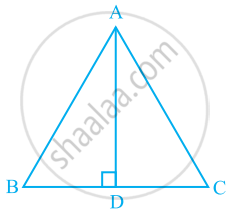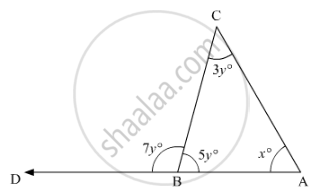Advertisements
Advertisements
Question
ABC is a triangle in which altitudes BE and CF to sides AC and AB are equal (see the given figure). Show that
- ΔABE ≅ ΔACF
- AB = AC, i.e., ABC is an isosceles triangle.

Solution
i. In △ABE and △ACF, we have
∠AEB = ∠AFC ...[Each = 90° as BE ⊥ AC and CF ⊥ AB]
∠A = ∠A ...[Common]
BE = CF ...[Given]
∴ △ABE ≌ △ACF ...[By AAS congruence rule]
ii. Since, △ABE ≌ △ACF
∴ AB = AC ...[By Corresponding parts of congruent triangles]
⇒ ABC is an isosceles triangle.
APPEARS IN
RELATED QUESTIONS
In ΔABC, AD is the perpendicular bisector of BC (see the given figure). Show that ΔABC is an isosceles triangle in which AB = AC.

In a ΔABC, if ∠A=l20° and AB = AC. Find ∠B and ∠C.
In a ΔABC, if ∠A=l20° and AB = AC. Find ∠B and ∠C.
Two lines AB and CD intersect at O such that BC is equal and parallel to AD. Prove that the lines AB and CD bisect at O.
In a ΔABC, it is given that AB = AC and the bisectors of ∠B and ∠C intersect at O. If M is a point on BO produced, prove that ∠MOC = ∠ABC.
Angles A, B, C of a triangle ABC are equal to each other. Prove that ΔABC is equilateral.
Fill the blank in the following so that the following statement is true.
Angle opposite to equal sides of a triangle are .....
Is it possible to draw a triangle with sides of length 2 cm, 3 cm and 7 cm?
Which of the following statements are true (T) and which are false (F)?
Difference of any two sides of a triangle is equal to the third side.
In the given figure, what is the value of x?

